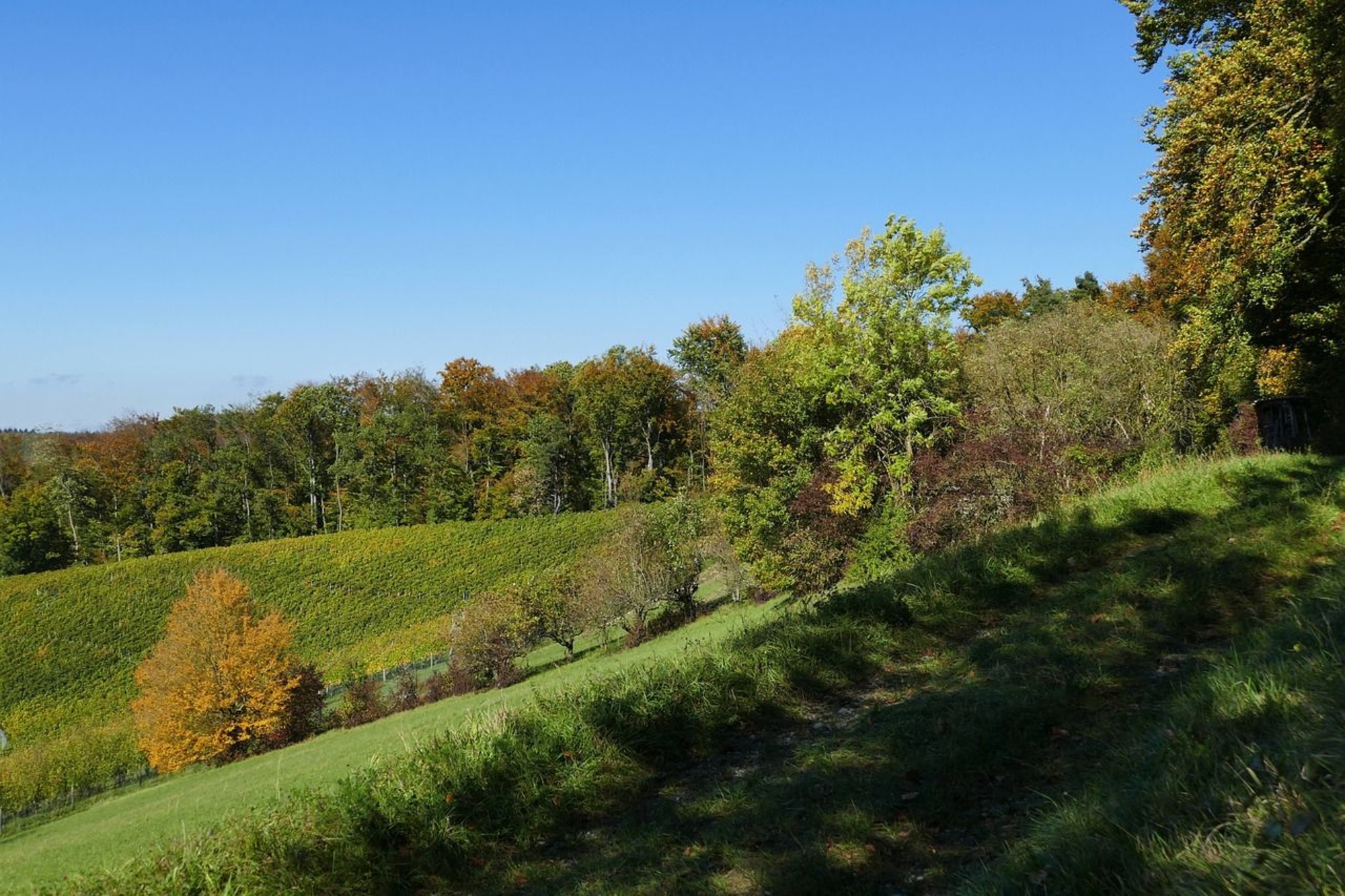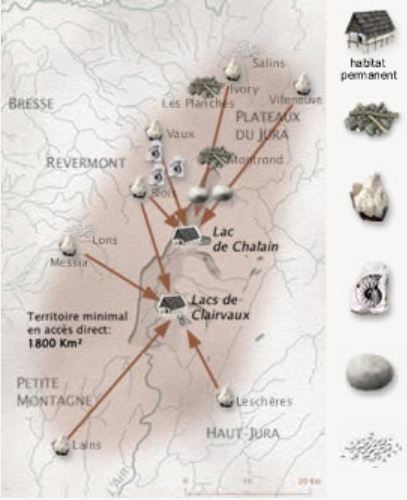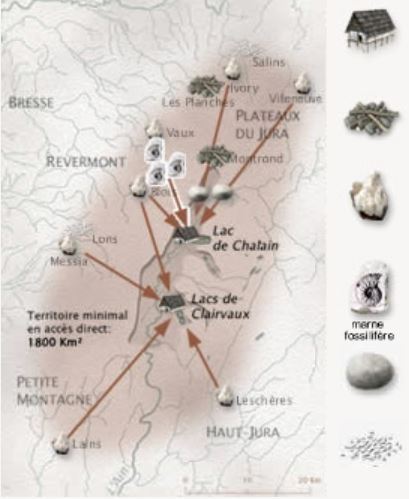There are many theories that lean in favor of hunting that took place over immense tracts of land.
Even though entire herds of deer were slaughtered (newborns, young, females and males) there are hardly any examples of unbalanced deer populations. Certain misshapen antlers found suggest at most some growth problems and, perhaps, competition with humans.
We can thus imagine that the Neolithic hunters had to cross huge amounts of territory each year so as not to run through all the available game stocks.
But how can we clearly know the extent of these hunting grounds? The response may come from the origin of the raw materials that the inhabitants of Chalain and Clairvaux had direct access to.
Location of villages nearby Chalain and Clairvaux.
Source : P. Petrequin, 1996
Location of Hunting camps nearby Chalain and Clairvaux.
Source : P. Petrequin, 1996.
Location of silex outcroppings nearby Chalain and Clairvaux.
Source : P. Petrequin, 1996.
Location of fossil marls nearby Chalain and Clairvaux.
Source : P. Petrequin, 1996.
Location fo shingle sources around Chalain and Clairvaux.
Source : P. Petrequin, 1996.
Location of salt exploitation nearby Chalain and Clairvaux.
Source : P. Petrequin, 1996.
The search for pottery materials
Pottery produced at Chalain between 3040 and 2980 BCE reveals inclusions (fossilized oyster shells or limestone fragments added to the clay) and perhaps even certain marls (used for producing cooking pots) that were transported from natural outcroppings to the villages on the shores of Lake Chalain. As the crow flies, this represents ten or more kilometers. Pottery makers used this territory, devoid of any Neolithic vestiges, as a direct source of raw material.
Large ceramics with multiple cord markings.
Clairvaux, La Motte-aux-Magnins, 30th century BCE.
Flint sources
The same thing could be shown for blocks and plates of flint: these were collected from natural outcroppings 30 kilometers south of Clairvaux and 20 kilometers west of Chalain. All of these lands were unoccupied. The raw material, brought back after a day's journey, was shaped and formed at the village to make arrowheads, harvesting knives and domestic tools.
Flint tools of regional origin.
Chalain, previous excavation.
A possible search for salt
It even appears that the communities of the Vallée de l'Ain may have used certain natural brine springs at Lons-le-Saunier, Grozon and Salins as sources for salt.
Vast hunting grounds
These medium-distance connections suggest that the size of the hunting grounds used by the populations at Chalain and Clairvaux may have reached 1800 sq. kilometers at the end of the 4th millennium.








